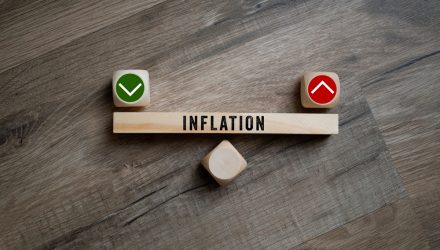Economists have increased the odds of a recession in the next 12 months yet again, raising likelihood to 28%, a jump up from 18% in January, the Wall Street Journal found in its most recent poll.
Although 63% of economists surveyed believe that the Fed will be able to successfully navigate curbing inflation without sparking a recession (a “soft landing”), most agree that growth is set to be significantly impacted.
Inflation for March, due to be reported this week, is expected to be slightly above February’s 7.9%, and although the Fed began raising rates in March, it is expected to become more aggressive in upcoming meetings in order to cool inflation. 84% of economists believe that the central bank will respond with a 0.50% point increase to interest rates at the early May meeting, and 57% anticipate that at least two of the six interest rate increases this year will be 0.50%.
Economists are grim on the outlook for inflation, believing that June 2022 will still see inflationary rates around 7.5%, falling to 5.5% by December, a number still well above the Fed’s goalpost of 2%. While economists are divided as to the driving force behind the elevated, long-term inflation (commodities, tight labor market, or the Ukraine war), they are largely in agreement that the Fed has difficult, urgent choices ahead in its work to curb inflation.
“To be seen not fighting it is politically unwinnable. But the only policy response the Fed has is to tighten,” said Amy Crew Cutts, Ph.D., president and chief economist of AC Cutts and Associates, who believes that the chances of a recession in the next 12 months are 70%. “Fed actions to curb inflation will lead to a recession sooner rather than later.”
Hedging for Inflation and Volatility With IVOL
The Quadratic Interest Rate Volatility and Inflation Hedge ETF (IVOL) from KFAFunds, a KraneShares company, is designed to have a twofold hedge against an increase in fixed income volatility and/or an increase in inflation. The fund also seeks to maximize yield curve increases, either brought about by long-term interest rates increasing or short-term interest rates falling; both are tied to big equity market declines.
IVOL is the first of its kind in active and passive options and offers access to the OTC fixed income options market, the mechanism it uses for long interest rate volatility. The fund invests in a mix of U.S. Treasury Inflation-Protected Securities (TIPS) of any maturity, which are U.S. government bonds whose principal amounts increase with inflation.
It also invests in long options directly tied to the shape of the U.S. interest rate swap curve, which steepens when the spread between longer-term debt instrument swap rates and shorter-term debt instruments grows larger, flattens when the spread grows smaller, and inverts when the spread is negative.
IVOL is actively managed by Quadratic Capital Management, an alternative asset management firm with experience in the options and volatility markets. It expects to invest less than 20% of the fund in option premiums and seeks to purchase options with a time-to-expiration between six months and two years.
IVOL carries an expense ratio of 1.05% and has approximately $1.7 billion in assets under management.
For more news, information, and strategy, visit the China Insights Channel.

